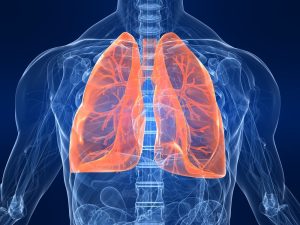10 Common Lung Problems, When to Worry and When to See a Doctor

Your lungs are vital organs that bring oxygen into your body and remove carbon dioxide. However, they can be susceptible to various conditions that affect their functioning.
Here are 10 common lung conditions, their symptoms, and when to worry and see a doctor.
1. Chronic Obstructive Pulmonary Disease (COPD)
- A type of progressive lung disease characterised by chronic respiratory symptoms and permanent/irreversibe tightening of the airways. Due to smoking. Symptoms include shortness of breath, wheezing, and chronic cough.
- When to see a doctor – if you’re experiencing persistent symptoms, especially if you’re a smoker or have a history of exposure to pollutants, consult a doctor.
2. Asthma
- A chronic autoimmune inflammatory disease that causes temporary/reversible tghtening of the airways. Symproms include shortness of breath, wheezing, and coughing.
- When to see a doctor – if you experience recurring episodes of wheezing, coughing, or shortness of breath, especially at night or during exercise, seek medical attention.
3. Pneumonia
- A usually bacterial infection of one or both lungs (with pus present). Symptoms include cough, fever, chills, and difficulty breathing. Viruses (including COVID-9 and flu) can also cause pneumonia.
- When to see a doctor – if you have a persistent cough, fever, or difficulty breathing, especially if you’re older or have underlying health conditions, see a doctor.
4. Acute bronchitis (chest infection, or lower respiratory tract infection, LRTI)
- An infection of the bronchi (see above), causing coughing and sputum/mucus production.
- When to see a doctor – if you have a persistent cough that lasts more than 2 weeks, especially if you produce mucus or have difficulty breathing, consult a doctor.
5. Lung Cancer
- A leading cause of cancer deaths worldwide. Symptoms include persistent cough (sometimes with blood), chest pain, and difficulty breathing.
- When to see a doctor – if you’re a smoker or have a family history of lung cancer, and experience such persistent symptoms, see a doctor.
6. Pulmonary Embolism (PE)
- A blood clot that blocks blood flow to the lungs. Symptoms include rapid onset of shortness of breath, chest pain (on breathing in, moving or coughing), and coughing up blood.
- When to see a doctor – if you experience any of these symptoms, especially after prolonged inactivity or surgery, seek immediate medical attention.
7. Cystic Fibrosis (CF)
- A genetic disorder that causes thick sputum/mucus buildup in the lungs. Symptoms include persistent cough, wheezing, and recurring lung infections.
- When to see a doctor – if you have a family history of cystic fibrosis or experience persistent symptoms, consult a doctor.
8. Pulmonary Fibrosis
- Long-term scarring of lung tissue (often an autoimmune disease) – leading to breathing difficulties. Symptoms include shortness of breath, dry cough, and fatigue.
- When to see a doctor – if you experience persistent symptoms, especially if you’ve been exposed to certain chemicals or have underlying health conditions, see a doctor.
9. Acute Respiratory Distress Syndrome (ARDS)
- A life-threatening condition that causes inflammation and damage to lung tissue. Symptoms include severe shortness of breath, confusion, and low blood oxygen levels.
- When to see a doctor – if you experience any of these symptoms, especially after a severe illness or injury, seek immediate medical attention.
10. Chronic Bronchiectasis
- A long-term condition – usually starting in childhood – where the airways are permanently widened, leading to recurring lung infections. Symptoms include persistent cough, sputum/mucus production, and difficulty breathing.
- When to see a doctor – if you experience persistent symptoms, especially if you have a history of childhood lung infections or underlying health conditions, consult a doctor.
When to See a Doctor (for lung conditions)
If you experience any of the following symptoms, seek medical attention:
-
Persistent cough or wheezing (if severe, or for more than 2 weeks)
-
Shortness of breath or difficulty breathing
-
Chest pain or tightness
-
Coughing up blood or rust-coloured sputum/mucus
-
Fever or chills (with any of the symptoms above).


